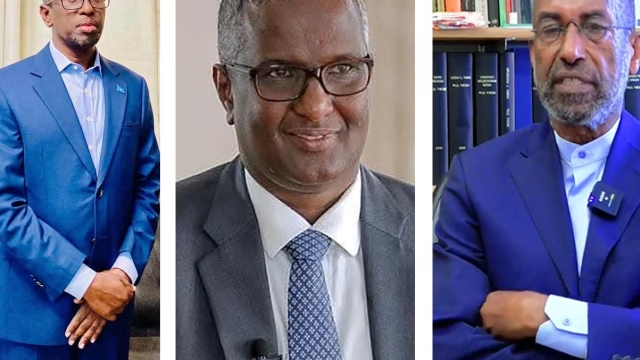MOGADISHU, 21 July 2010 (IRIN) – As Islamist insurgents battle it out with government troops backed…
MOGADISHU, 21 July 2010 (IRIN) – As Islamist insurgents battle it out with government troops backed by African Union forces (AMISOM) in Somalia’s capital, civilians face continuous danger from above in the form of the mortar shells used by most parties to the conflict.
Shelling accounted for many of the injuries to the 160 people admitted in the first three weeks of July to Madina hospital, the largest hospital in Mogadishu, according to its director-general, Mohamed Yusuf.
Over roughly the same period, some 11,500 Mogadishu residents were displaced by the fighting, according to the UN Refugee Agency.
“Most of the patients admitted are those on whom surgery was performed, such as those with stomach injuries,” Yusuf said.
“Patients with chest, head and bone fractures are also admitted. About 60 percent of the injuries are due to explosives, shelling using heavy mortars and exploded bombs.”
He said a few required specialized surgery only available out of the country but “we tackle most of the others here as we have been doing in the past 20 or so years†since the fall of the country’s last functioning government.
Yusuf said 40 percent of those in the hospital were women and children, most of whom had been caught up in mortar attacks in places such as markets.
Most of the patients treated at Madina were too poor to afford the charges and are often treated for free. The hospital depends on contributions from well-wishers and fees paid by patients who can afford them, he said.
Keysaney hospital
In early July, the International Committee of the Red Cross (ICRC) decried the shelling of Keysaney, another hospital in Mogadishu.
“We are shocked about the situation at Keysaney,” Pascal Mauchle, the head the Somalia ICRC delegation, said in a statement on 1 July.
“Despite our repeated calls to all warring parties to respect international humanitarian law and spare medical facilities, nothing seems to have changed on the ground. The situation is becoming more and more dangerous for patients and medical staff by the day.”
ICRC said since the beginning of 2010, some 1,400 “war patients” had been treated at the hospital, including at least 300 women and around 200 children.
While the ICRC did not point any fingers, UN Secretary-General Ban Ki-moon, in his latest report to the Security Council on Somalia noted that “civilians were increasingly caught in crossfire, mortar attacks and artillery shelling between insurgents and Government forcesâ€, and went on to express concern about the “shelling of civilian areas and indiscriminate return fire by Government and AMISOM troopsâ€.
Night-time shelling
In the Mogadishu district of Dayniile, home to many internally displaced persons (IDPs), one resident told IRIN: “There has been heavy shelling of civilian areas, mostly at night, coming from government and AMISOM controlled areas. We don’t know why they are shelling civilian areas.”
He named Hodan, Howlwadag and Wardhigley as other areas affected by shelling.
Information Ministry spokesman Sheikh Abdirizak Mohammed Qeylow told IRIN that Al Shabab insurgents, not government forces, “are the ones who attack peaceful areas resulting in the civilian casualties which we are now witnessing, with many Somalis being forced to flee to IDP camps.
AMISOM spokesman Gaffel Nkolokosa said the force’s troops had “always avoided shelling of civilian areas. It is not involved in shelling civilian areas even if provoked by the other partiesâ€.
“AMISOM troops undergo thorough training in their home countries before deployment. They are conversant with relevant aspects such as international humanitarian law and as such would not shell civilian areas,” he told IRIN.
aa-mg/js/am/cb


